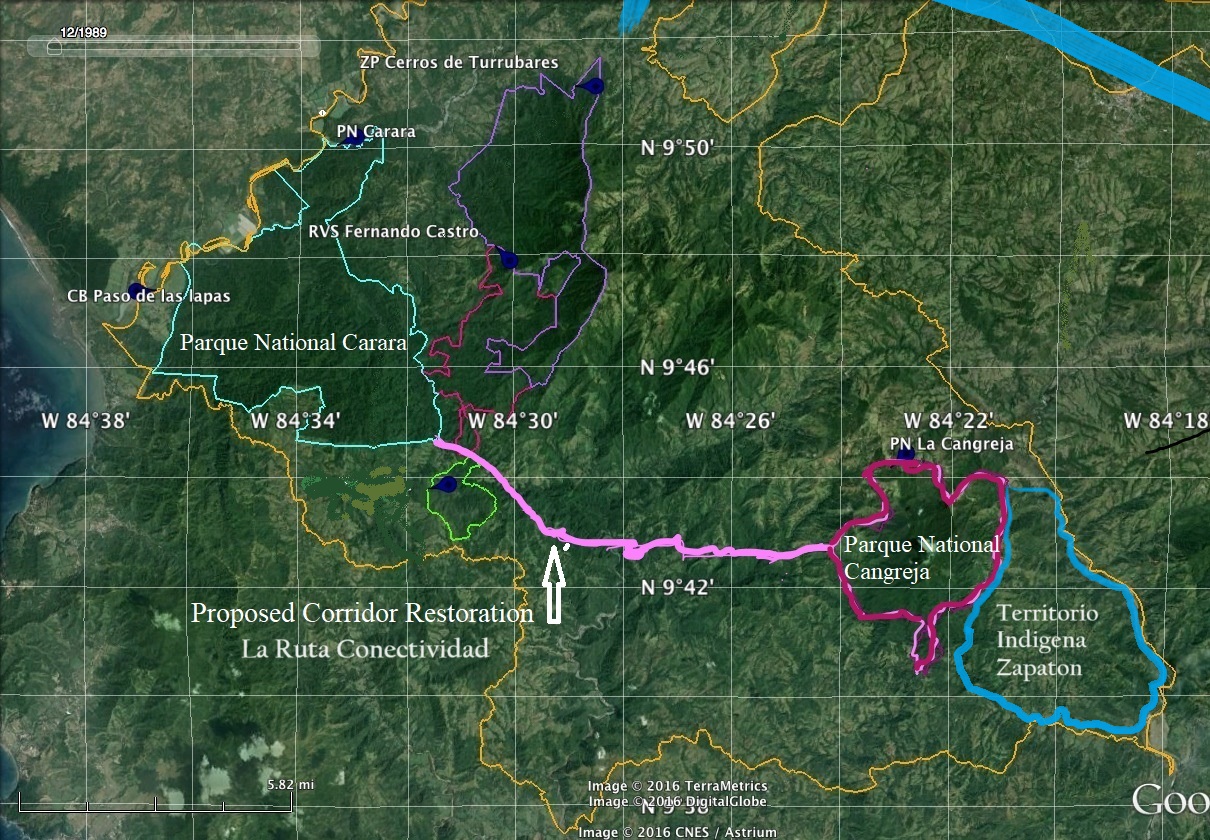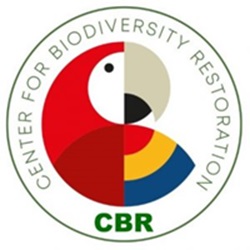La Ruta Conectividad – a visionary project dedicated to preserving and restoring biodiversity in Costa Rica. Our proposed 20 km vegetative route aims to connect two national parks and multiple wildlife reserves, seamlessly bridging fragmented parcels into a larger, healthier ecosystem.
In a region considered a key biodiversity hotspot, protection is of utmost importance. The proposed route spans the economically underdeveloped Paso de las Lapas Biological Corridor, offering a unique opportunity to safeguard biodiversity and provide local communities with opportunities of sustainable livelihoods.

We have identified a terrestrial connectivity pathway that surpasses river systems and connects Carara National Park and La Cangreja National Park, covering approximately 20.7 linear kilometers. This route is notable for its significant conservation value, with numerous small forest patches already present. To ensure the success of La Ruta Conectividad, we have conducted thorough groundwork, encompassing environmental considerations, feasibility studies, community workshops, map verification, and identification of property owners. Currently, we are actively working on assembling the necessary logistics to bring this transformative pathway to fruition.
We have chosen to follow the path outlined in the Diagnosis of the Paso de las Lapas 2018 Biological Corridor (see link below) and are extending it towards the indigenous territory of Zapatón for two primary reasons:
- The eastern limit of the CBPL is marked by the Grande la Candelaria River, which serves as a vital network of connectivity routes linked to the river system connecting with the Los Santos CB. Therefore, the extension of the route contributes to the interconnection of these significant ecosystems.
- The indigenous territory of Zapatón represents a robust nucleus of ancestral Huetar culture. Alongside the archaeological richness found throughout the Connectivity Route’s territory and its sphere of influence, these legacies merit preservation.
The Connectivity Route encompasses a buffer space of 2 km in each direction, aligning with the guidelines of the National Biological Monitoring Program (PRONAMEC). This recommended distance accounts for the territorial needs of medium-sized mammals. Within this territorial space, we have identified a total of 13 communities and a diverse mosaic of farms.
Given the complexity of the territory, a strategic decision has been made to focus on five representative pilot communities. This approach allows us to conceptualize the model and implement actions that promote learning toward regenerative development.
Recognizing the need for sustainable development, we propose ecotourism, sustainable livestock pastures, agroforestry of cacao, and courses for naturalists as avenues for sustainable employment. Our aim is to design systems that meet local needs without compromising the integrity of the natural heritage. Community involvement and education are integral to the success of these initiatives, and we offer various education programs to enhance local knowledge and technical expertise. (See our Projects Page )
Background:
– La Cangreja National Park (LCNP) has been encircled by open livestock pastures since 1945, limiting wildlife movement.
– La Ruta Conectividad will connect LCNP with Carara National Park and other conservation areas.
– Situated in the Paso de las Lapas Biological Corridor (CBPL) spanning 56,200 hectares and has an estimated population of 11,310 inhabitants.
– The Department of Transportation plans to pave a road bisecting the corridor, bringing changes to this rural region. We aim to proactively manage biodiversity amidst these shifts.
Several team members have collaborated since 1990, and our accumulated experience is evident. Our past restoration efforts on disturbed land have successfully revived biodiversity, evidenced by the return of pumas, ocelots, and other key species. Join us on this journey to protect Costa Rica’s natural heritage and promote sustainable development.
To learn more visit our Biodiversity Page and our Biological Corridors Page
For more information see these links:
- BIOLOGICAL CORRIDOR PASO DE LAS LAPAS MANAGEMENT PLAN 2018-2027(English)
- BIOLOGICAL CORRIDOR PASO DE LAS LAPAS MANAGEMENT PLAN 2018-2027(Espanol)
- SINAC Reports
English Spanish Agathos Power Point presentation of CBPL Management Plan
Project: Biological Corridors
SINAC Sistema Nacional de Areas de Conservacion, Costa Rica
UN Small Grant Report 2020 regarding enhancing ” socio-ecological resilience by producing local and global environmental and sustainable development benefits”
Add Zapaton Huetar information, cultural, livestock, to the above storyline . Add reservation outline to the map https://centennialglobalexperience.com/2016/03/23/quitirrisi-huetar-tribe/

![cbpl-logo-3[1] cbpl-logo-3[1]](https://c4br.org/wp-content/uploads/elementor/thumbs/cbpl-logo-31-qiwqbfwjaa8ydzluyxar06b8ff92ldef5pe5jzcxvi.jpg)
